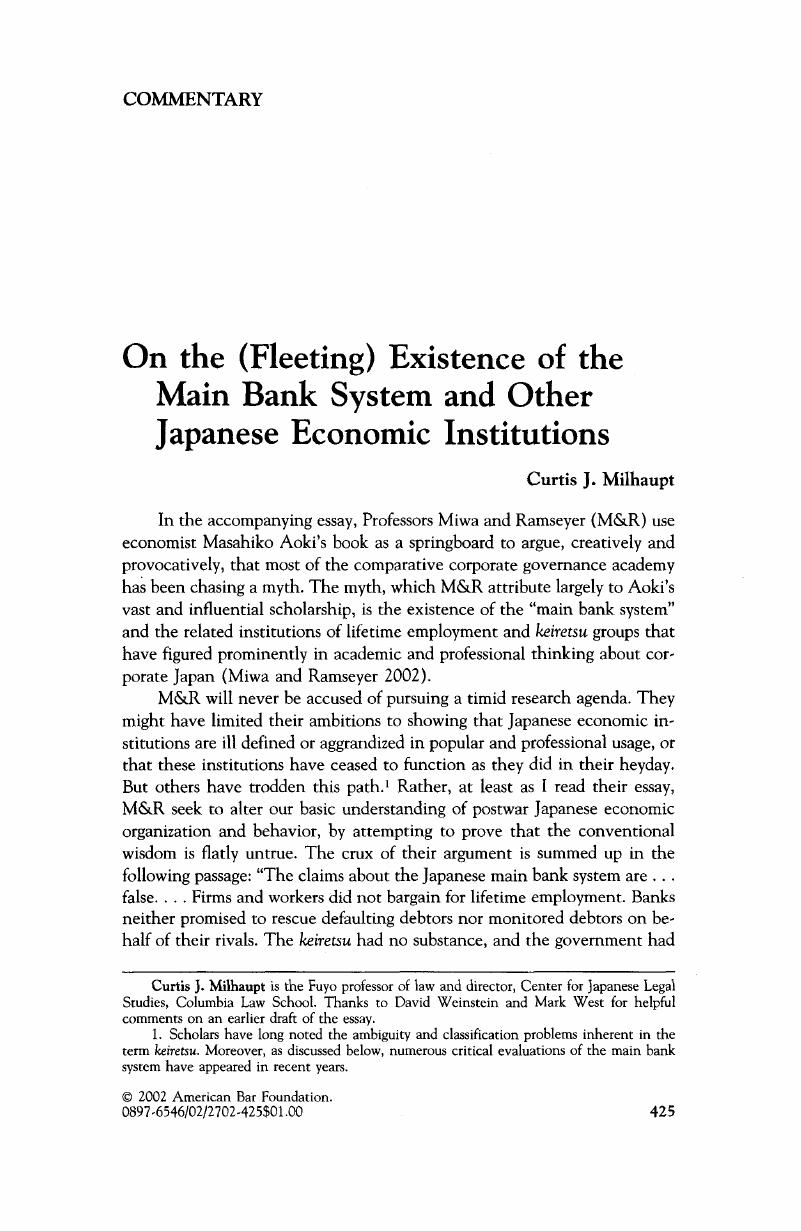Crossref Citations
This article has been cited by the following publications. This list is generated based on data provided by Crossref.
Miwa, Yoshiro
and
Ramseyer, J. Mark
2002.
The Myth of the Main Bank: Japan and Comparative Corporate Governance.
Law <html_ent glyph="@amp;" ascii="&"/> Social Inquiry,
Vol. 27,
Issue. 2,
p.
401.
Nottage, Luke R.
and
Wolff, Leon T.
2005.
Corporate Governance and Law Reform in Japan: From the Lost Decade to the End of History?.
SSRN Electronic Journal,
Nottage, Luke R.
2006.
Nothing New in the (North) East? Interpreting the Rhetoric and Reality of Japanese Corporate Governance.
SSRN Electronic Journal,
Aguilera, Ruth V.
and
Jackson, Gregory
2010.
Comparative and International Corporate Governance.
Academy of Management Annals,
Vol. 4,
Issue. 1,
p.
485.
Aguilera, Ruth V.
and
Jackson, Gregory
2010.
Comparative and International Corporate Governance.
Academy of Management Annals,
Vol. 4,
Issue. 1,
p.
485.
Clarke, Donald
2011.
"Nothing But Wind"? The Past and Future of Comparative Corporate Governance.
American Journal of Comparative Law,
Vol. 59,
Issue. 1,
p.
75.
Krook, Joshua
2017.
Essays in AI: Technology, Automation and the Future of 9-5 Work.
SSRN Electronic Journal,
Frendy
2022.
The relevance of keiretsu affiliation on disclosure quality in contemporary Japanese economy.
Asia-Pacific Journal of Accounting & Economics,
Vol. 29,
Issue. 6,
p.
1579.
Kustner, Clemens
and
Waterstraat, Silke
2023.
Finance in Crises.
p.
87.





